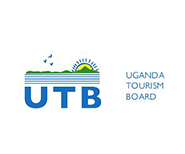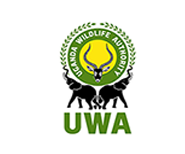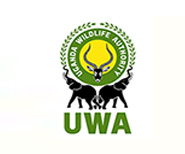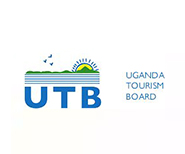Africa is home to some of the most biodiverse rainforests in the world. From towering ancient trees to lush undergrowth teeming with life, these rainforests are vital to the ecosystem, playing a critical role in regulating the climate while providing shelter for thousands of species. Join us as we explore seven of Africa’s most important and fascinating impenetrable rainforests.
1. Congo Basin Rainforest, Central Africa
The Congo Basin Rainforest is the second-largest tropical rainforest in the world, spanning six countries and covering over 1.8 million square kilometers. This immense forest is home to some of the most endangered species on earth, such as the forest elephant, western lowland gorilla, and bonobo. It is also a vital carbon sink, absorbing significant amounts of carbon dioxide annually.
- Highlights: Exploring the Congo Basin offers a glimpse into a vibrant ecosystem where indigenous communities have lived in harmony with nature for centuries. River expeditions and guided forest treks reveal the diversity of flora and fauna, from majestic elephants to rare birds.
- Best Time to Visit: December to February, June to September (dry seasons for easier forest navigation).
2. Bwindi Impenetrable Forest, Uganda
Bwindi Impenetrable Forest is a UNESCO World Heritage Site known for its dense and ancient forest, which houses nearly half of the world’s remaining mountain gorillas. With over 200 tree species and a rich array of wildlife, Bwindi is a biodiversity hotspot, offering some of the best gorilla trekking in the world.
- Highlights: In addition to gorilla trekking, Bwindi is home to over 350 bird species and offers a unique chance to explore a true montane rainforest. The park’s mist-covered canopies, rugged trails, and waterfalls create a breathtaking and adventurous atmosphere.
- Best Time to Visit: June to August, December to February (dry season for optimal gorilla trekking).
3. Kakamega Forest, Kenya
Kakamega Forest is Kenya’s only remnant of the ancient Guineo-Congolian rainforest that once stretched across Central Africa. It is renowned for its diverse birdlife, butterflies, and indigenous trees. The forest provides a tranquil and unique experience with winding trails, waterfalls, and streams cutting through the dense foliage.
- Highlights: Birdwatchers flock to Kakamega to see species such as the Great Blue Turaco and other rare forest birds. The forest is also home to primates like the black-and-white colobus and De Brazza’s monkeys, making it a rich environment for nature lovers.
- Best Time to Visit: June to October, December to March (dry seasons for better visibility and ease of hiking).
4. Ituri Forest, DR Congo
Located in the northeastern part of the Democratic Republic of Congo, the Ituri Forest is part of the larger Congo Basin. It is a dense tropical rainforest known for its rich biodiversity and unique inhabitants like the okapi, a rare forest giraffe, as well as pygmy communities who have lived there for millennia.
- Highlights: Trekking through the Ituri Forest provides a deep immersion into a pristine wilderness. Visitors can encounter rare species, explore hidden waterfalls, and experience the cultural practices of indigenous peoples who live in harmony with the environment.
- Best Time to Visit: December to February, June to September.
5. Masoala National Park, Madagascar
Masoala National Park, the largest protected area in Madagascar, is known for its incredible biodiversity, which includes unique rainforest and coastal ecosystems. The park is home to several species of lemurs, chameleons, and an array of plant life that can only be found on the island.
- Highlights: Visitors to Masoala can trek through dense rainforests and explore its vibrant marine reserves, where humpback whales migrate between July and September. The mix of rainforest and coral reefs makes this park a truly special destination.
- Best Time to Visit: September to December (whale migration and best wildlife sightings).
6. Udzungwa Mountains, Tanzania
Part of the Eastern Arc Mountains, the Udzungwa Mountains are home to some of Tanzania’s most ancient and biodiverse rainforests. This region, often referred to as the “Galapagos of Africa,” has over 30 endemic species of plants and animals.
- Highlights: Hiking through the Udzungwa Mountains takes you past towering waterfalls, endemic monkeys such as the Sanje mangabey, and rich birdlife. It’s an ideal spot for trekkers looking to explore off-the-beaten-path rainforests.
- Best Time to Visit: June to October (dry season for trekking).
7. Monte Alén National Park, Equatorial Guinea
Monte Alén National Park is one of Africa’s least explored rainforests, offering a true wilderness experience in the heart of Equatorial Guinea. The park’s dense forests are home to gorillas, chimpanzees, elephants, and over 265 bird species.
- Highlights: The lack of mass tourism here means you can explore its incredible wildlife in near solitude. Trekking the forest trails leads to spectacular views of cascading waterfalls and chances to spot some of the forest’s elusive inhabitants.
- Best Time to Visit: June to October (dry season).
Planning Your Rainforest Adventure?
Rainforest exploration requires both physical readiness and a respect for nature. The weather can be unpredictable, and conditions are often humid and challenging. Ensure you’re equipped with the right gear, permits, and a knowledgeable guide.
At Paanvuu Safaris, we are experts in organizing unforgettable rainforest treks across Africa, from permits to guided tours. Let us help you plan your adventure in Africa’s lungs. Contact us at [email protected] for more information.







